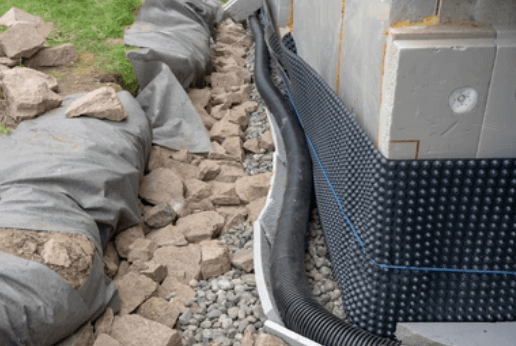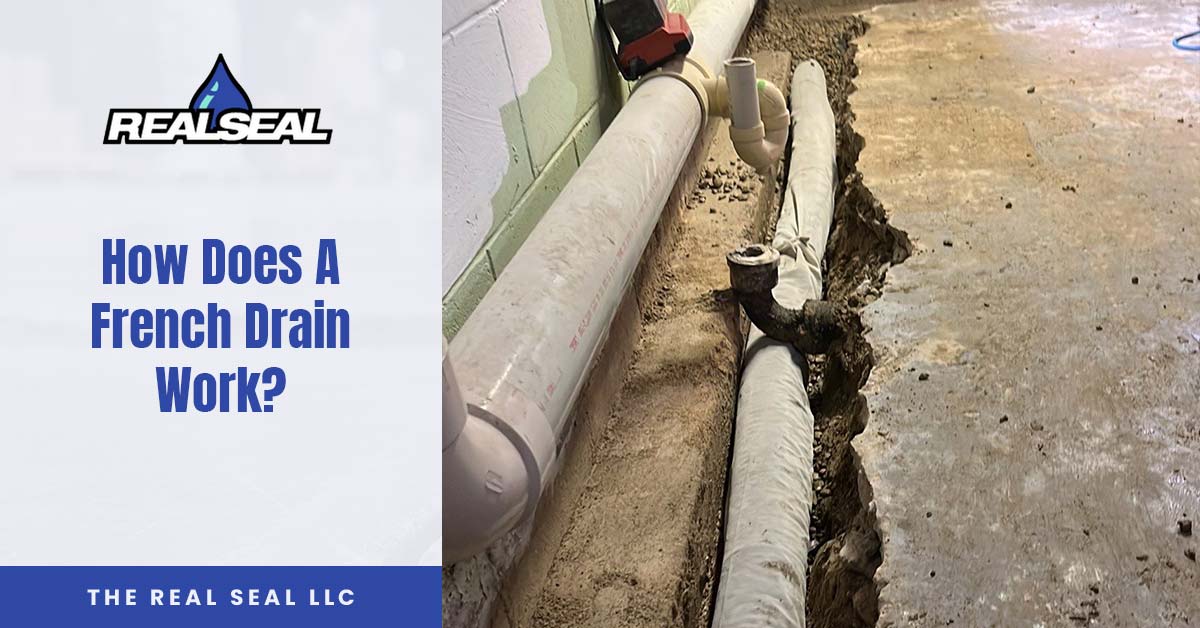Choosing the Right Contractor for Your Portland French Drain Project
Choosing the Right Contractor for Your Portland French Drain Project
Blog Article
The Crucial Guide to Keeping Your French Drain for Durable Performance
Keeping your French drain is vital to its performance and your building's protection. Regular checks can save you from expensive fixings and water damage. You'll need to know what indicators to look for and exactly how usually to evaluate your system. And also, comprehending the cleansing procedure can make a substantial distinction. Let's discover the crucial steps for ensuring your drain functions well for years ahead.
Recognizing the Feature of a French Drainpipe
A French drain is an important element in handling water around your home. It directs excess water away from your foundation, avoiding flooding and damage. When hefty rainfall drops, the drainpipe collects water through a perforated pipe buried in gravel. This system permits water to flow easily, reducing pressure on your basement wall surfaces and minimizing the risk of leaks.You could ask yourself how it operates in practice. As water saturates the soil, gravity pulls it towards the drainpipe. The perforated pipeline captures this water, transporting it to a designated drainage location or storm drain. This process maintains your lawn dry and secures your home's structural integrity.Understanding how a French drain functions is crucial to valuing its importance. By successfully carrying water away, it aids keep a completely dry and risk-free living environment. Keeping your French drainpipe in leading problem assurances you prevent costly repair services down the line.
Routine Examinations: What to Try to find
Beginning by checking for any type of blockages that may be blocking water circulation when you're examining your French drain. Take note of signs of surface area erosion around the drainpipe, as this can suggest potential problems. Normal assessments will aid maintain your drainage system functioning efficiently.
Clogged Drain Assessment
Just how can you inform if your French drainpipe is blocked? Watch for water pooling in your yard, especially after heavy rainfall. That's a red flag if you see areas where water gathers instead of draining pipes. You ought to likewise examine the drainpipe outlet; if water isn't streaming out as it should, there's likely a clog. Listen for uncommon gurgling noises, which can show trapped air. Furthermore, evaluate the drainpipe's surface area for any type of plant life growth, as roots can infiltrate and block the system. Ultimately, if you smell mildewy smells, it might point to stagnant water brought on by a blockage. Consistently assessing these indicators can assist you maintain your French drainpipe efficiently and prevent pricey repair work.
Surface Disintegration Inspect

Cleansing Your French Drainpipe: Step-by-Step Guide
Cleaning your French drainpipe is crucial for maintaining it operating correctly. You'll need some particular devices and a clear process to ensure every little thing runs smoothly. Allow's stroll with the actions and tips for maintaining your drain successfully.
Devices You'll Require
To take on the task of cleaning your French drainpipe successfully, you'll intend to gather a couple of necessary tools. First, grab a tough set of gloves to safeguard your hands from particles and sharp things. A tiny shovel or trowel will certainly aid you get rid of dirt or clogs around the drain. For removing out the inside, a plumbing's serpent or a high-pressure water nozzle can be incredibly useful. You'll also require a container for collecting any particles you take out. Finally, having a yard tube available will make it less complicated to rinse out the drainpipe and guarantee it's streaming efficiently. With these tools ready, you'll be established for a thorough cleansing session!
Cleaning Refine Actions
Beginning by evaluating the location around your French drain for any type of visible particles or clogs. Get rid of leaves, branches, or dirt that might obstruct water flow. Next off, examine the inlet and outlet areas; clear any blockages to ensure appropriate drain. Use a yard hose to purge the drainpipe, guiding water into the inlet. This aids dislodge any kind of collected sludge or sediment. If you discover relentless blockages, take into consideration using a plumbing's serpent to damage them up. After cleaning, check the gravel around the drainpipe; renew it if it's removed. Validate the drainpipe covers are intact and securely in area to protect against debris from entering. Normal cleansing maintains your French drainpipe working efficiently.
Maintenance Regularity Tips
While regular maintenance is vital for your French drain's long life, recognizing just how typically to keep it can make all the distinction. Preferably, you need to evaluate your French drainpipe a minimum of twice a year, preferably in spring and loss. After heavy rains or snowmelt, check for obstructions or particles. If you observe any kind of standing water, it's time to clean your drain.In areas with heavy foliage, even more frequent maintenance-- about every three months-- may be essential. Furthermore, think about cleansing your French drain after major storms or if you observe water merging in your lawn. By remaining proactive, you'll ensure your French drain functions effectively and secures your building from water damage. Routine checks will certainly save you money and time over time.
Recognizing Typical Problems and Their Solutions
It's essential to recognize typical issues with your French drainpipe and implement effective options when you discover water merging in your lawn or damp places in your basement. One frequent issue is obstructing, usually triggered by debris like fallen leaves or sediment. To fix this, you can make use of a plumbing serpent or a high-pressure water jet to clear blockages.Another concern might be improper incline. If your drainpipe isn't sloped properly, water will not flow far from your home. You can adjust the slope by excavating and repositioning the drainpipe pipe.Lastly, check for damage or fractures in the drainpipe itself. Replacing the harmed sections is important for peak performance if you locate any kind of. By addressing these concerns promptly, you'll aid ensure that your French drainpipe remains to function properly, securing your residential property from water damage and keeping a dry, risk-free atmosphere.
Seasonal Upkeep Tips for Your French Drainpipe
Addressing typical issues with your French drain is just the initial step in ensuring its lasting effectiveness. Seasonal upkeep is vital for peak performance. In the spring, remove leaves and particles that might have collected throughout winter season. Look for any clogs in the outlet or capture basin, as water requires a clear path to flow freely.During summer, check your drainpipe for directory any indications of moving or resolving dirt. Make certain it's still level and working effectively. As loss strategies, clear out any type of dropped leaves to avoid blockages before wintertime arrives.In wintertime, look for freezing temperatures. If you live in a chilly climate, make sure your drain isn't in danger of freezing. Protecting exposed pipes can help. Normal checks and prompt upkeep can stop expensive fixings and keep your French drain functioning properly year-round. Keep positive and take pleasure in satisfaction recognizing your drainage system is in great form!
When to Call in an Expert
Knowing when to call an expert can conserve you time and prevent more damage to your French drainpipe. It's a clear indication that your drain might be obstructed or harmed if you discover persistent standing water in your yard. Don't ignore weird smells, as they can show sewer backup or degeneration, which calls for prompt attention.If you locate that your drain isn't functioning appropriately after efforts to tidy or preserve it, it's time to get to out for expert help. Furthermore, if you're not sure regarding the underlying concerns or lack the needed tools, hiring a professional can supply peace of mind.Finally, if your French drain is old or has actually experienced considerable deterioration, expert analysis can figure out whether fixings or complete substitute is required. Trust the experts to assure your drainage system works successfully for several years to come.
Tips for Preventing Future Drain Troubles
To keep your French drain functioning efficiently, consistently examining and maintaining it can make all the difference. Begin by clearing debris, leaves, and dirt from the surface and drain openings. This avoids obstructions that can result in water backup. Examine the crushed rock around the drainpipe; if it's compacted or deteriorated, consider adding fresh gravel to preserve perfect flow.Next, divert water far from your drain by ensuring downspouts and rain gutters are clear and routing water a minimum of 3 feet far from your structure. On a regular basis examine for any kind of indications of damages or sagging. If you discover issues, resolve them immediately.Finally, consider mounting a filter or a catch container to trap bigger debris before it goes into the drainpipe. By staying aggressive with these pointers, you'll minimize the risk of future drainage problems and keep your French drain in top form.
Regularly Asked Inquiries
For how long Does a French Drainpipe Generally Last?
A French drainpipe commonly lasts around 30 to 40 years, depending on the materials utilized and upkeep (Portland French Drain). If you our website stay up to date with routine checks, you can extend its life expectancy also further
Can I Set Up a French Drain Myself?
Yes, you can mount a French drain on your own if you've obtained the right devices and knowledge. Just ensure to plan thoroughly, comply with neighborhood policies, and assurance appropriate drainage to stay clear of future concerns.
What Materials Are Utilized in a French Drainpipe?
You'll require perforated pipe, gravel, landscape fabric, and a strong drainage pipeline for your French drainpipe. learn this here now These products aid reroute water efficiently, protecting against flooding and keeping your residential or commercial property completely dry and secure from water damage.

Is a License Required to Mount a French Drainpipe?
You'll likely need a permit to mount a French drain, depending upon neighborhood regulations. Talk to your town to assure you abide by any kind of needed guidelines and prevent prospective issues during installation.
What Are the Expenses Connected With French Drainpipe Maintenance?
Maintaining a French drainpipe generally costs in between $100 and $500 annually. You'll need to think about expenses for cleaning, fixings, and inspections. Regular maintenance aids prevent bigger assurances and expenses your system operates properly for years - Portland French Drain. When you're evaluating your French drainpipe, begin by checking for any clogs that may be obstructing water flow. By remaining positive, you'll guarantee your French drainpipe functions successfully and protects your residential property from water damage. When you observe water merging in your lawn or damp places in your cellar, it's vital to determine typical issues with your French drainpipe and execute effective options. You can change the incline by excavating and rearranging the drainpipe pipe.Lastly, check for damages or splits in the drainpipe itself. Examine the gravel around the drain; if it's compacted or worn down, think about adding fresh crushed rock to keep excellent flow.Next, divert water away from your drain by making sure gutters and downspouts are clear and directing water at the very least three feet away from your foundation
Report this page